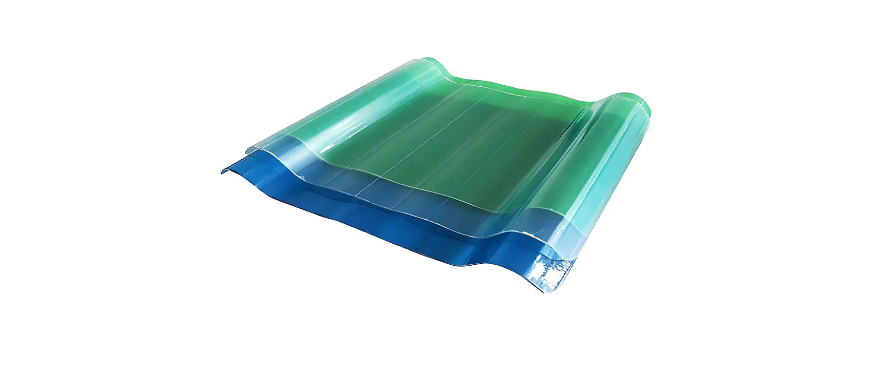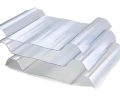
Fiberglass is a composite material known for its strength and versatility, making it essential in various applications, from construction to automotive. The fiberglass sheet melting point is crucial for understanding how this material behaves under heat. Typically, fiberglass melts at temperatures ranging from 1000°C to 1200°C, depending on its specific formulation and additives. Knowing the fiberglass sheet melting point allows engineers and manufacturers to select appropriate materials for high-temperature environments, ensuring safety and performance. Additionally, this knowledge helps in processing and shaping fiberglass sheets during manufacturing, enabling efficient production methods while maintaining material integrity. Understanding the fiberglass sheet melting point is vital for optimizing its use in diverse industries.
What is Fiberglass Sheet Melting Point
Fiberglass is composed of glass fibers that are woven into a mat and combined with resin to form a strong, lightweight material. The composition can vary, but it typically consists of silica, alumina, and other additives to enhance specific properties. A key component in some fiberglass products is hollow glass fiber, which consists of small glass tubes filled with air. These fibers provide a lightweight structure and improve thermal insulation, making the material ideal for applications requiring reduced weight and enhanced heat resistance. Fiberglass sheet protects for its resistance to high temperatures, which plays a significant role in determining the fiberglass sheet melting point. The fibreglass melting point is influenced by the type of glass used, the resin involved, and any additional materials integrated during manufacturing. Typically, the melting point of fiberglass lies between 1,000 to 1,200°C (1,832 to 2,192°F).
Melting Point of Fiberglass
The fiberglass sheet melting point varies based on the type of fiberglass and its formulation. Generally, fiberglass will begin to soften at temperatures around 1000°C and can fully melt by approximately 1200°C. Different grades of fiberglass, such as E-glass and S-glass, exhibit slightly different melting behaviors due to variations in their chemical compositions. E-glass, known for its electrical insulating properties, tends to have a melting point on the lower end of the scale, while S-glass, which offers higher tensile strength, can withstand greater temperatures.
Factors Affecting the Melting Point
Several factors influence the fiberglass sheet melting point. The composition of fiberglass panel, including the type of glass and the resin used, plays a significant role. Additives like flame retardants or fillers can also impact the thermal properties of the material. The manufacturing process, such as the cooling rate and the conditions under which the fiberglass is produced, further affect the melting characteristics. These variables make it crucial for manufacturers to conduct thorough testing to determine the precise melting point of their specific fiberglass products.
Applications Based on Fiberglass Sheet Melting Point
The fiberglass sheet melting point directly influences its applications. In the construction industry, fiberglass is often used for insulation, roofing, and fiberglass wall sheets due to its ability to withstand high temperatures. In automotive manufacturing, components made from fiberglass can endure the thermal stress of engines and exhaust systems. Additionally, fiberglass is commonly utilized in electrical applications, where its high melting point and dielectric properties make it an ideal insulator.
Technical Data and Safety Information Related to Fiberglass Sheet Melting Point
Understanding the technical data associated with fiberglass is essential for safe handling and application. Fiberglass technical data sheets provide detailed information on the material’s properties, including its melting point, tensile strength, and chemical resistance. Safety Data Sheets (SDS) are equally important as they outline the safe handling procedures, potential hazards, and emergency measures associated with fiberglass. Familiarity with these documents ensures that users can manage fiberglass safely, minimizing risks during manufacturing and installation processes.
Installation Tips for Fiberglass Sheets Considering Melting Point
Proper installation techniques are crucial for maximizing the benefits of fiberglass sheets. When working with fiberglass, it’s essential to be aware of its melting point to avoid damaging the material during processing. Users should use suitable cutting tools that do not generate excessive heat, as this can approach the melting point. Additionally, ensuring proper ventilation during installation can help mitigate any fumes that may be released when fiberglass is exposed to high temperatures.
Future Trends in Fiberglass Technology and Melting Point
As industries evolve, so do the technologies associated with fiberglass manufacturing. Ongoing research aims to enhance the properties of fiberglass, including its melting point, to improve performance in extreme conditions. Innovations in formulations and processing techniques may lead to fiberglass sheets that can withstand even higher temperatures, broadening their applications in fields such as aerospace and advanced automotive design. Keeping abreast of these developments can help manufacturers adapt to changing market demands.
Tips on How to Remove Gummy Tape from Fiberglass Rod
The Key of Fiberglass Sheet Melting Point
Fiberglass is a composite material made from glass fibers and resin, and the fiberglass sheet melting point is crucial for determining how this material behaves under heat. This melting point influences its effectiveness in various applications, making it essential for engineers and manufacturers to understand. Knowing the fiberglass sheet melting point helps ensure proper material selection and processing methods for different environments.
Composition of Fiberglass
The primary components of fiberglass include silica, alumina, and various additives. Silica forms the backbone of the glass fibers, providing strength, while alumina enhances thermal resistance. These elements directly contribute to the fiberglass sheet melting point, which typically ranges from 1000°C to 1200°C. Recognizing the composition of fiberglass helps in understanding how these materials can withstand high temperatures.
History and Development of Fiberglass Materials
The history of fiberglass is marked by innovative developments that have expanded its applications. Early fiberglass materials focused on insulation and decorative purposes. As technology advanced, so did the understanding of fiberglass sheet melting points, leading to stronger and more versatile fiberglass sheets. Companies like GangLong Fiberglass have played a significant role in making these materials widely available for various industries.
Melting Point of Fiberglass
The fiberglass sheet melting point is a critical characteristic, generally falling between 1000°C and 1200°C. This melting point can vary based on the type of fiberglass, such as E-glass or S-glass, which exhibit different thermal behaviors. Awareness of the fiberglass sheet melting point is essential for ensuring that products can withstand the thermal demands of their applications.
Factors Influencing Fiberglass Sheet Melting Point
Several factors impact the fiberglass sheet melting point. The chemical composition is vital, as different types of fiberglass include various additives and resins that affect thermal performance. Additionally, the manufacturing process, including cooling rates and techniques, influences the melting point. Understanding these factors allows manufacturers to tailor fiberglass products to specific temperature requirements.
Applications of Fiberglass Based on Melting Point
The fiberglass sheet melting point significantly affects its applications. In construction, fiberglass sheets are utilized for roofing and insulation due to their ability to endure high temperatures. In the automotive sector, components made from fiberglass are suited for areas that experience thermal stress, such as engine covers. Furthermore, fiberglass is widely used in electrical applications where its high melting point makes it an excellent insulator.
How Well Does Fiberglass Rod Hold Thread Successfully
Technical Data and Safety Information Related to Fiberglass Sheet Melting Point
The technical data is essential for safe handling and application of fiberglass materials. Technical data sheets provide detailed information about fiberglass properties, including the melting point. Safety Data Sheets (SDS) are crucial for detailing safe handling procedures and potential hazards associated with fiberglass. Familiarizing oneself with these documents is key to ensuring the effective use of materials, considering the fiberglass sheet melting point.
Installation Tips for Fiberglass Sheets Considering Melting Point
Proper installation techniques are vital for maximizing the benefits of fiberglass sheets. Being aware of the fiberglass sheet melting point helps prevent damage during installation. Users should employ suitable cutting tools that minimize heat generation to avoid reaching the melting point. Additionally, ensuring adequate ventilation during installation mitigates any fumes that may be released when fiberglass is exposed to high temperatures.
Future Trends in Fiberglass Technology and Melting Point
As industries continue to evolve, advancements in fiberglass technology aim to enhance properties like the fiberglass sheet melting point. Ongoing research seeks to develop fiberglass materials that can withstand even higher temperatures, broadening their applications in sectors such as aerospace. Staying informed about these innovations is crucial for manufacturers looking to adapt to changing market demands and improve product performance.
Why the Best Fiberglass Rods Are Essential for Anglers
FAQs about Fiberglass Sheet Melting Point
Fiberglass itself is non-combustible; however, the resin used in the fiberglass composite can be flammable. Typically, the resin can ignite at temperatures around 400°F (204°C) to 600°F (316°C). This means while the fiberglass material can withstand considerable heat, care should be taken in environments where ignition sources may be present. It’s important to use fiberglass in accordance with safety standards and guidelines to minimize fire risks, particularly in applications involving high temperatures or open flames. Always ensure proper ventilation and follow safety protocols when working with fiberglass materials.
The temperature rating of fiberglass sheets varies based on their composition and intended use. Generally, standard fiberglass sheets can withstand temperatures up to 200°F (93°C) without losing structural integrity. However, certain high-performance fiberglass sheets are designed to handle temperatures up to 500°F (260°C) or higher. It’s crucial for users to consult the manufacturer’s specifications to determine the exact temperature rating for their specific fiberglass sheet, especially when the material will be exposed to extreme conditions.
Fiberglass is known for its excellent heat resistance. Depending on the specific resin used in the fiberglass composite, it can typically withstand temperatures ranging from 150°F (65°C) to over 300°F (149°C) without significant degradation. However, specialized formulations, such as high-temperature fiberglass, can endure even higher temperatures, up to 500°F (260°C) or more, making them suitable for industrial applications. This thermal stability is one of the reasons fiberglass is widely used in industries like aerospace, automotive, and construction.

As the editor of GangLong Fiberglass, I have years of experience and in-depth research, focusing on cable tray products, fiberglass solutions, and grille systems. I incorporate years of industry insights and practical experience into every content, committed to promoting the progress of the industry. At GangLong Fiberglass, my commitment is reflected in every product, from innovative cable trays to durable fiberglass solutions and sturdy grille systems. As an authoritative voice in the industry, my goal is to provide valuable information to professionals and businesses and promote forward-looking solutions.


